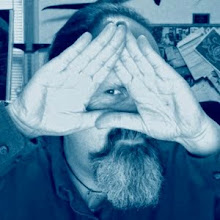
Assignment for today:
Jewelers, like other artists, are always looking for new ideas. Where better to look that the work of other artists?
Do some research online and find some artist-made jewelry that you like. You should be looking for things that you might be able to make with the techniques we have learned so far (or something similar that looks like you might be able to do).
Experiment with searching for different combinations of "key words". Some words you might use could be: cold connection, rivet, jewelry, pendant, bracelet, earring, necklace, hand-made, artist, etc.
REQUIREMENTS FOR TODAY'S ASSIGNMENT: Find pictures of at least 5 pieces of jewelry that you like, and post links to the pictures by posting a "comment" below. (Make sure that your NAME is attached to your comment!)
Remember, what we are looking for is hand-made jewelry that is made by artists, NOT commercially manufactured jewelry. And, it should be something that you might actually be able to make on your own.
Here are a few more examples:

Note connections: small nuts and bolts.

This ring is formed on a ring mandrel. We have one of these.

Note: on this piece, the pieces of metal are separated by copper tubing, and connected with nuts and bolts.
The main idea of this assignment is just to get inspired!




